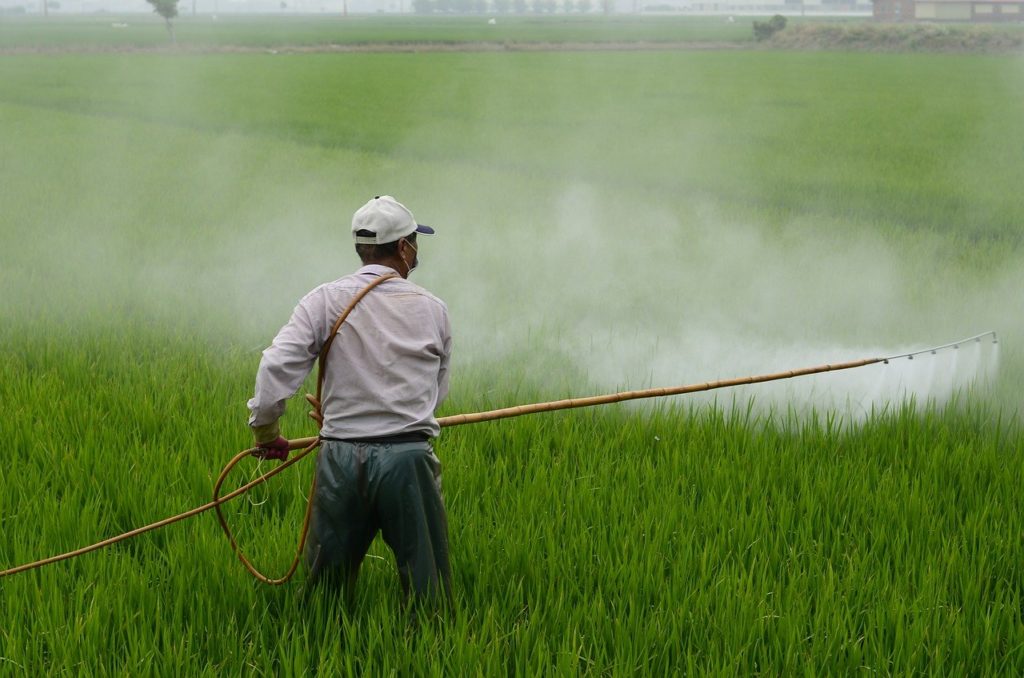Germany has the largest percentage of arable land with a value of 33.7%. The country has a fertilizer consumption of 197.2 Kg/hectare. The trade norms imposed within the EU with respect to environmental conservation is anticipated to restrict the agrochemicals market growth.
European Agrochemicals Industry Outlook
Agrochemicals are defined as synthetically manufactured chemicals compounds employed to enhance agricultural crop yields. These chemicals are highly specific in nature and are hereafter classified as specialty chemicals under some segments of the market. These chemical compounds were one of the key reasons for the start of the Green Revolution in the 1960s. This initiative led to increased research within the agricultural segment in terms of fertilizers as well as pesticides. Between the 1950s and 1960s, countries made use of mineral fertilizers in addition to intensive irrigation to procure crop yields.
According to toxicology studies, these products are highly poisonous for the environment as well as the living habitats of a region. These chemicals can cause fatal damage on induction into the food chain. Due to the toxicity associated with these plant protection products, countries have been posing restrictions based on quantities of application. Moreover, safety standards associated with the storage of the product and adept labeling procedures are also to be followed by farmers who make use of these techniques.
Several countries have established maximum residue levels (MRL) in order to optimize chemical intake. This strategy restricts the crop-based trade since MRLs are majorly applied to both homeland sales crops as well as international export qualities. The trade limitations and classifications have been stated in the agrochemicals market research report. The competitive mapping within this sector has been analyzed on a quantitative basis hence covering a broad information based bandwidth.
Moreover, agrochemicals are based on precise formulations. Additionally, the price associated with the raw materials used to fabricate these products is very high. Hence the cost of agrochemicals is also higher as compared to organic agricultural crop enhancers. Additionally, the selectivity associated with some of these products is low. Therefore, they cause harm to both the essential as well as non-essential entities within an agricultural pasture. The crop residues are also one of the key challenges associated with this product that limits the market growth.

Owing to the environmental hazards associated with this product, countries have been focusing on practicing integrated crop management. The technique enables a conventional and optimized supply of nutrients that can be beneficial in terms of cost. The organic, as well as inorganic supplements used in farming, are combined in order to yield optimum crop yield through this method.
Chemical Market Forecast focuses on providing an economic purview for the Agrochemicals vertical. The platform gives a comprehensive analysis based on the value chain as well as the supply chain associated with this market. The supplier margins and the logistics associated with this sector can be studied and understood through this domain. The source makes use of primary as well as secondary research-based methods in order to create a well-diversified market research report.
EU’S efforts in building a safe agrochemical base
On performing classification based on functionality, agrochemicals can be classified as pesticides, fertilizers, insecticides, herbicides, nematicides, etc. All ranges of pesticides include an active ingredient in order to eradicate unwanted pests of weeds. These materials interact with the target substances to enhance crop yield. Due to the toxicity associated with plant protection products, they are hereby tested by the European Commission. These products can be employed only after having received a green flag with respect to the safety standards. The ecotoxicology and the impacts of these products are studied over a laboratory scale.
The European Food Safety Authority (EFSA) carries out risk assessment tests associated with these products. This report is hereafter forwarded to the European Commission to facilitate adequate decision making. Approvals are then provided based on intensive evaluations. The European Chemical Agency (ECHA) manages the law of classification as well as labeling associated with chemical products.
The European Commission also makes use of a Common Agricultural Policy (CAP) to reduce environmental pollution. The increased use of nitrate, as well as phosphate-based fertilizers within this region, results in issues like eutrophication. The EU has been focusing on the development of cross-compliance and rural development measures in order to eradicate these issues. Green direct payment to farmers is one of the regulatory norms under the European Commission. The payments for farmers are no longer linked to production. On the contrary, the commission is based on agricultural practices employed by them in order to cultivate crops.
EU’S Agrochemicals hub: EU’s Agrochemicals market is an expanding segment with rapid growth dynamics. The people within this region make use of crop management techniques that employ both organic as well as inorganic harvest enhancers. France, the United Kingdom, and Germany are some of the largest agrochemical markets on average within the EU. Other regions that focus on agricultural development include Italy and Spain. According to world bank data, fertilizer consumption within France has a value of 163.1 kg/hectare. In Germany, the fertilizer utilization accounts for a value of 197.2 Kg/hectare. Additionally, the United Kingdom accounts for the largest fertilizer consumption with a value of 252.9 kg/hectare. Amongst the three top markets, it is seen that Germany has the largest percentage of arable land (33.7%). Therefore, the amount of fertile land is larger within this region that promotes crop cultivation.

